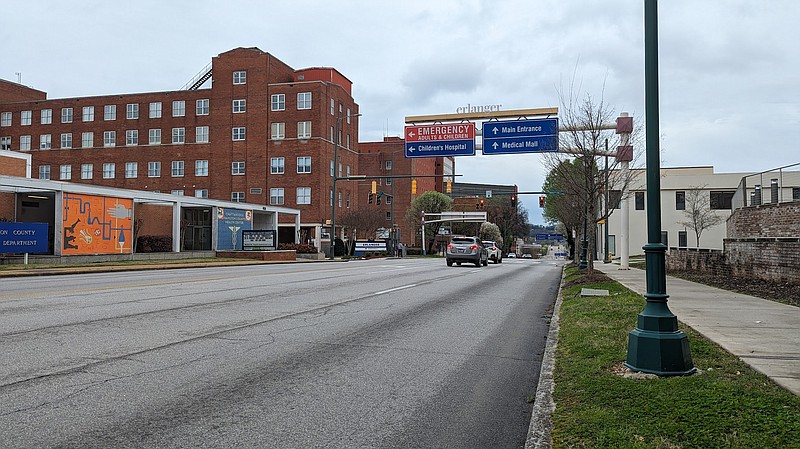As part of a federal grant awarded to the city of Chattanooga, technology will be installed along Third Street near Erlanger hospital to help enhance pedestrian safety, a move that will complement the city's roadway technology in other places such as M.L. King Boulevard downtown.
The city announced the $4 million grant Thursday. It's a part of the Bipartisan Infrastructure Law passed by Congress and signed by President Joe Biden in 2021.
Of that grant, $2 million will be used to promote safety for pedestrians and cyclists on Third Street between the intersections at Siskin Drive and Glenwood Drive.
Ken Doyle, transportation project manager with the city, said in a phone interview planning for the grant is in the early stages, but technology is planned to be used to alert drivers of pedestrians and cyclists traversing mid-block crossings on Third Street.
"We're trying to use connected vehicle technology to improve safety for vulnerable road users," Doyle said.
(READ MORE: With streets built mostly for cars, some want Chattanooga to make way for pedestrians)
Doyle said the city could use camera technology, as seen on M.L. King Boulevard, to identify pedestrians and cyclists crossing and in turn alert drivers, either through modern car technology or the driver's smartphone.
"That's just one possibility of things that this project could do," Doyle said. "It's a bit of an exploration."
Emergency vehicles and buses with the Chattanooga Area Regional Transportation Authority could also communicate with traffic signals in the Erlanger area to prioritize those vehicles in cases of emergency or when a bus is late for a stop, Doyle said.
The city's grant is phase one of the technology awarded to the city. Doyle said, based on how the phase goes, the city plans to apply for phase two, funding that could be used to expand the technology outside Third Street.
"To make that application, we need to learn something from this project first, so that we can write a good application," Doyle said. "We can take what we've learned and say, 'This is how we can expand what we've learned and cover not only Third Street but many other corridors in Chattanooga, if not the whole city.'"
He said the technology could be used to help address the spike in pedestrian deaths the city saw in 2023.
"Better communication between the signal system and the driver," Doyle said. "The signal system can be aware of a pedestrian long before the driver ever gets there. There's certainly a lot of potential for that."
Doyle said when the technology will be in place on Third Street has not been determined.
(READ MORE: UTC receives grant for thermal cameras to be installed along smart corridor)
Mina Sartipi, founding director of the Center for Urban Informatics and Progress at the University of Tennessee at Chattanooga, said in a phone interview that Chattanooga was one of 34 cities awarded the grant out of 321 applications.
The center at UTC operates the smart corridor on M.L. King Boulevard, which is planned to expand to all of downtown Chattanooga in the coming years.
Sartipi said the technology on Third Street will complement what is present on the smart corridor and the region more broadly.
"Go from one corridor to the whole city and go beyond that," Sartipi said. "If I'm driving down to Atlanta or Nashville or Knoxville, it should still work in other places, too. It enables us to even test those things that go beyond one city or one region."
Contact Ben Sessoms at bsessoms@timesfreepress.com or 423-757-6354.
